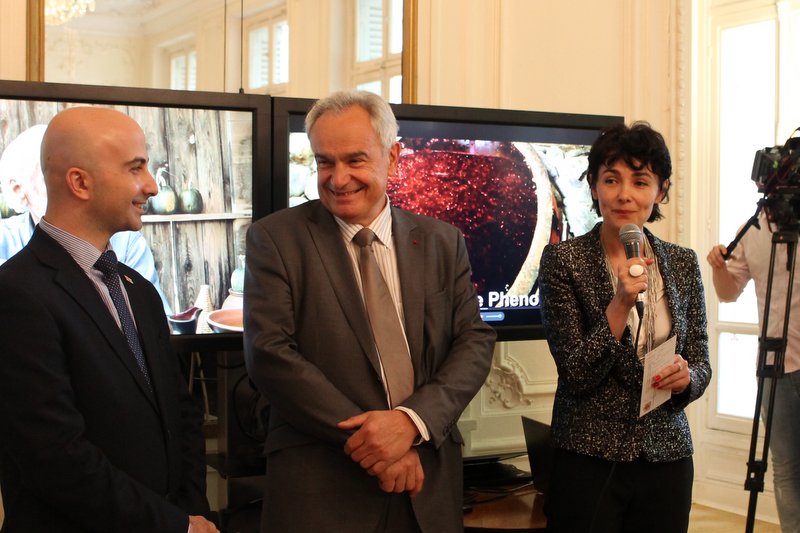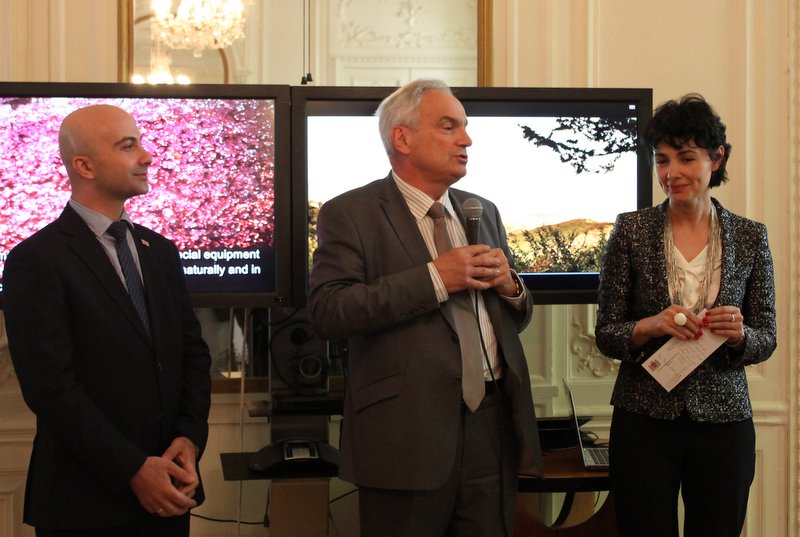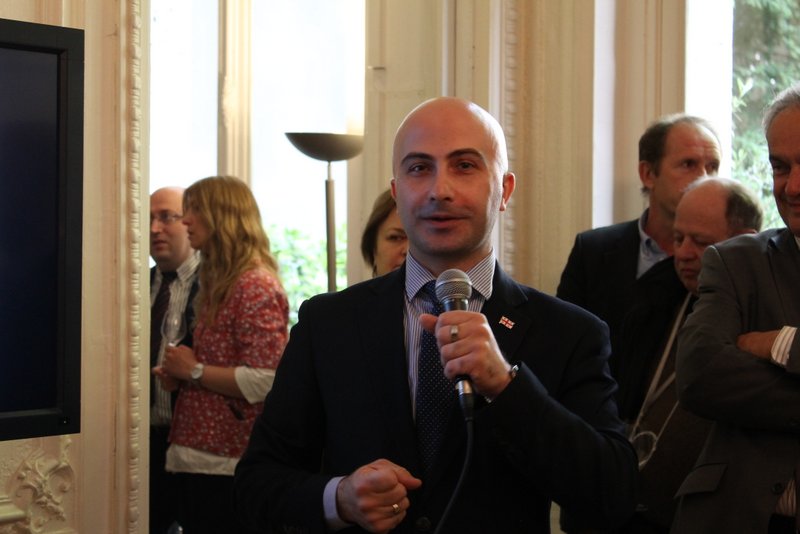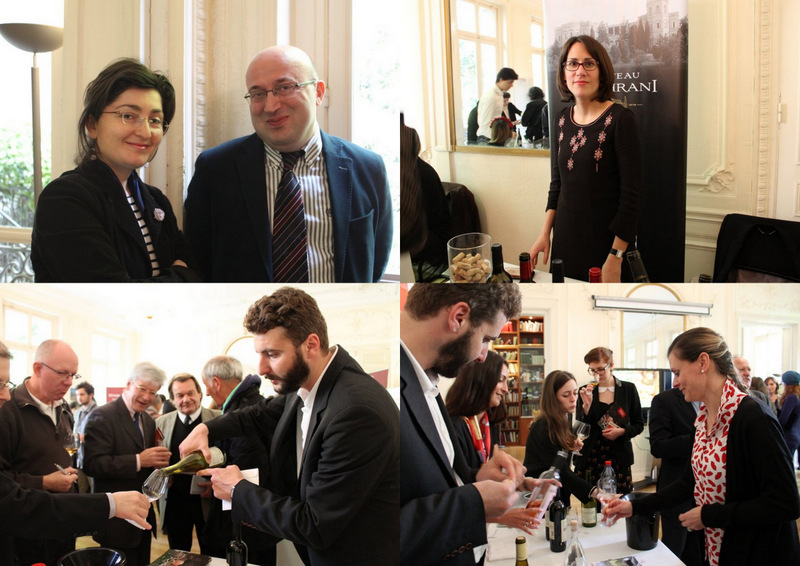The Ambassador recalled that Georgia, the heart of the Caucasus, is one of the cradles of global viticulture. Vines have been grown there for thousands of years, in ideal geological and climate conditions. The oldest seeds, found in various parts of the country, date back to at least 8000 BC and belong to the Vitis Vinifera species. Today, 525 native vine varieties are grown in Georgia.

The Director General of the OIV, Mr Jean-Marie Aurand, praised the second occurrence of this presentation and thanked Georgia for its considerable involvement in the OIV's activities since the World Congress in Tbilisi in 2010. Specifying that he was to travel to Georgia at the beginning of June, Mr Aurand emphasised the resurgence of Georgian wines. Small winegrowers, cooperatives and independent wineries rival one another in terms of quality.

Mr Giorgi Samanishvili, President of the Georgian National Wine Agency (GNWA), presented various aspects of the history and the challenges surrounding Georgian viticulture, insisting on the fact that wine represents a treasure, a part of the culture and an asset for Georgia. Vines can be found everywhere, and are deeply rooted in the daily lives of Georgian people, in poetry, painting and architecture.

This vine and wine culture is closely linked to the country's history. Careful attention has been paid to viticultural traditions, which have been passed down through the generations. Since December 2013, traditional winemaking in a Qvevri (a large clay jar) has been on the UNESCO Intangible Cultural Heritage of Humanity List.
Gaumarjos, a toast to you in Georgian!
